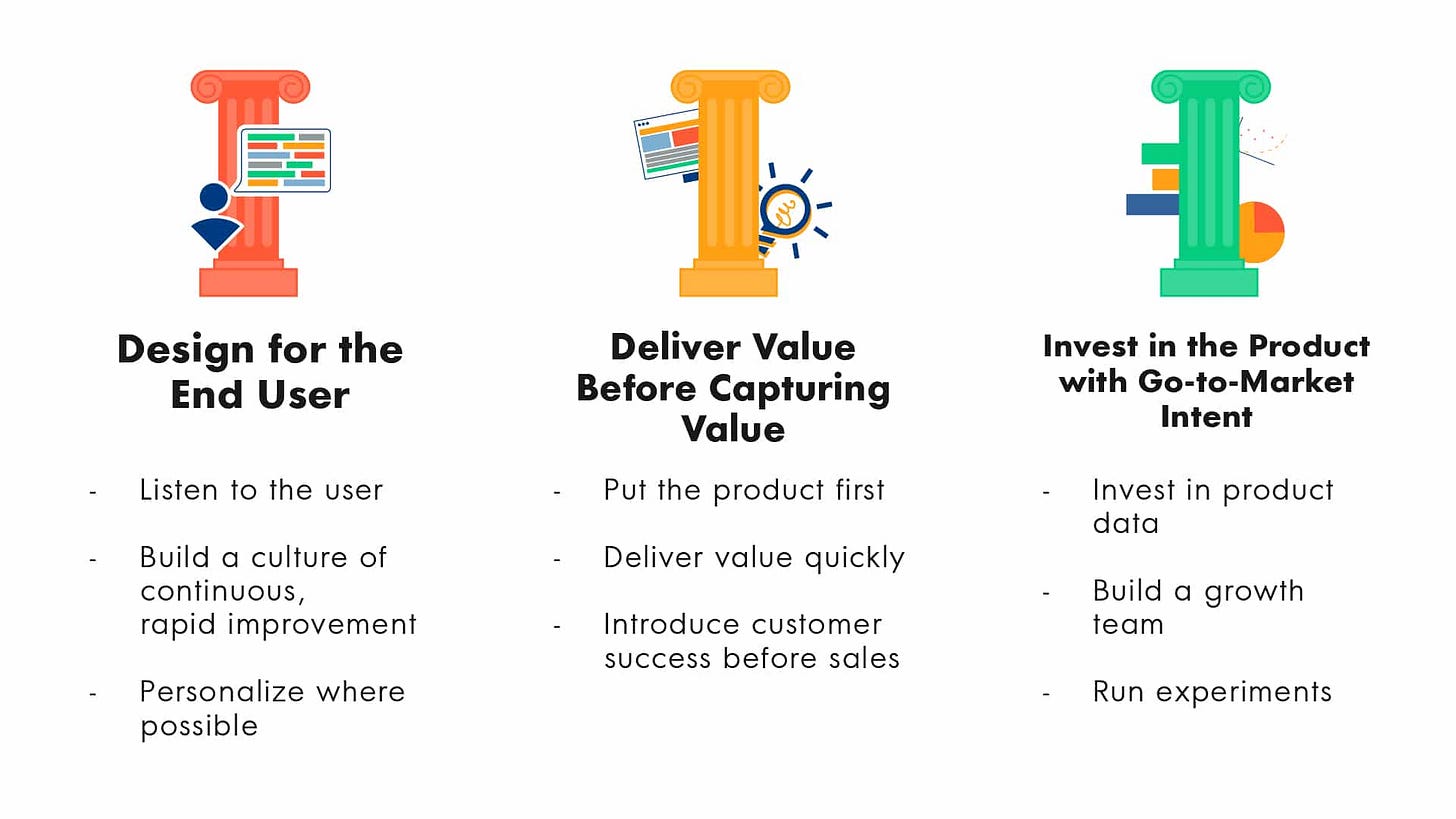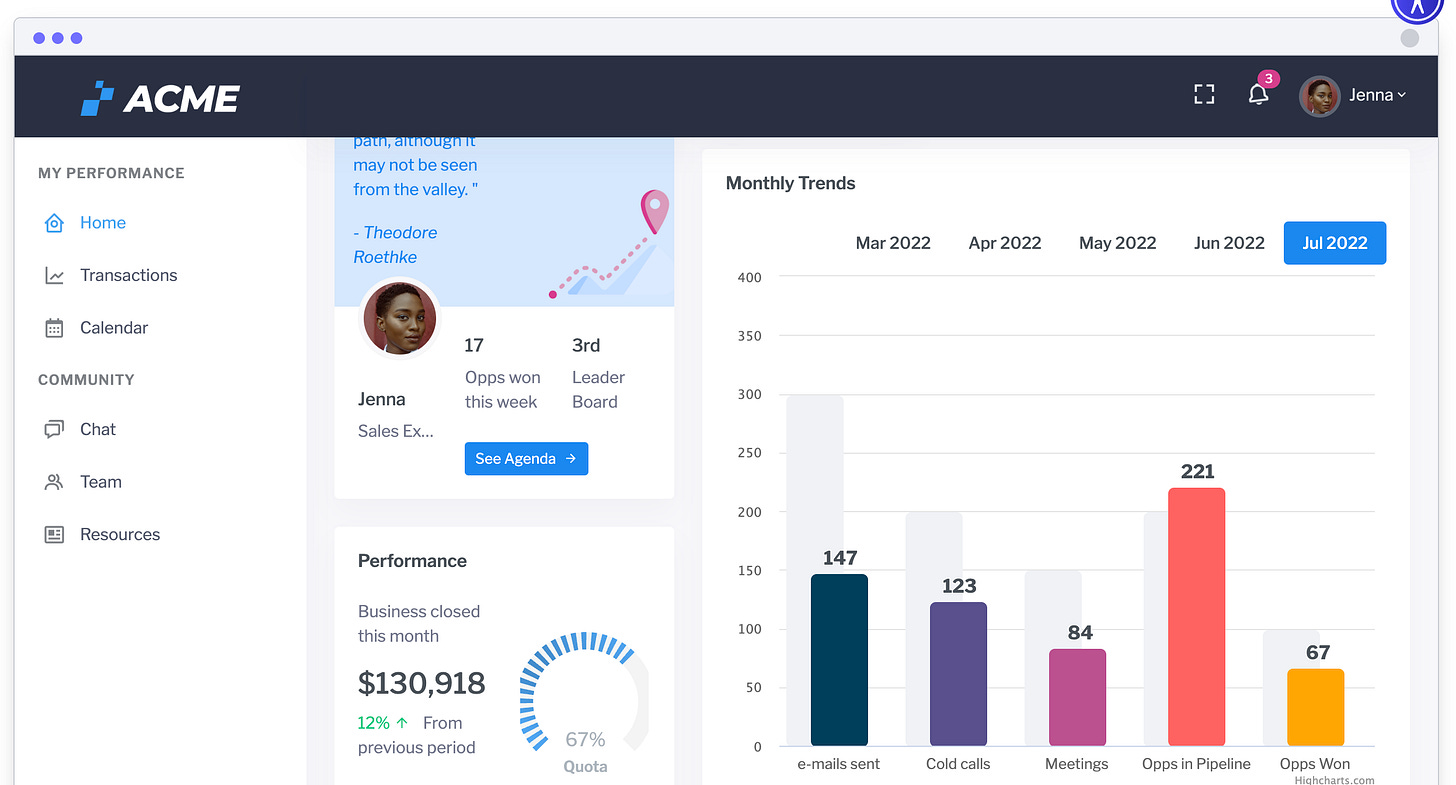411. Upside-down PLG 🙃
The unconventional Product-Led Growth strategies that don't start with acquisition
Hi there 👋
One of my new favorite newsletters is Ari Murray’s Go-To-Millions, a free 3x/week newsletter about how to grow a brand. I’m also a big fan of Ari’s newsletter colleagues over at Workweek, a media company that is building a roster of awesome creators who run wonderful newsletters across a variety of topics (check out Hebba Youssef’s if you want a fresh take on People Ops). Imagine: newsletter-writers-as-influencers. What a world!
Wishing you a great week ahead,
Kevan
(ᵔᴥᵔ)
Thank you for being part of this newsletter. Each week, I share playbooks, case studies, stories, and links from inside the startup marketing world and my time at Oyster, Buffer, and more.
Say hi anytime at hello@kevanlee.com. I’d love to hear from you.
Product-Led Growth is waaay more than self-serve. Here are 3 examples
Sometimes when I’m advising a founder or marketing leader about Product-Led Growth (PLG), I have to debunk a few theories, the largest, gnarliest of which is this:
I have a Get Started for Free button. Doesn’t that mean I’m PLG?
Self-serve is not the same as PLG. Freemium is not the same as PLG.
These types of acquisition models can absolutely be part of a Product-Led Growth strategy. But on their own — apart from a more holistic PLG plan — they are simply the mechanisms by which people sign up. They aren’t enough to drive a go-to-market growth strategy.
Product-Led Growth is all about value.
Great PLG strategies allow users to access your product’s value as easily, quickly, and clearly as possible.
Sometimes this means self-serve or freemium. Other times it may mean on-demand demos and personalized PQL funnels, awesome website → landing page journeys with fantastic product marketing, or perfectly aligned monetization plans that are built with the end user in mind (not the company’s pocketbooks).
Here are the three PLG pillars that OpenView Ventures preaches:
Design for the end user
Deliver value before capturing value
Design the product with go-to-market intent
With these updated definitions of PLG, the possibilities expand as to what you can do with it. I’ve experienced this first-hand at Oyster and in advising a handful of other PLG-interested companies. Here are three of my favorite new ways to bring PLG into a go-to-market strategy without necessarily building a self-serve funnel.
1. PLG as fuel for expansion revenue
You’ve probably heard me reference this growth data before: There are three primary ways to grow your SaaS business: 1) Acquisition, 2) Monetization, and 3) Retention. Most often, acquisition is going to be the lowest-leverage. Yet that seems to be where we spend most of our time and attention!
At Oyster, we found a lot of success in applying PLG principles to the retention and monetization levers of our growth, specifically with our expansion revenue.
When companies first hire through a global employment platform like Oyster, they have a lot of questions (understandably so! they are hiring someone halfway around the world in a brand new-to-them country). Value realization — actually hiring someone — is blocked by loads of friction in the form of questions, trust, risk, and compliance. But once you’ve made that first hire and you understand the process, future hires are much easier to make. This is where the PLG engine kicks in.
Reduce friction in adding users / seats to your customers’ plans (in the case of Oyster, a “user / seat” is synonymous with hiring another person)
Make this expansion process as self-serve and delightful as possible
Upsell in a personalized way — based on the product usage and data that you know about your customer. For example, you can upsell a “custom contracts” product to customers who have previously made contract amendments or who fall into a midmarket demographic
2. PLG aligned to monetization
When we built a growth team at Oyster, their first priority was working on monetization — both the mechanics of how people pay us (reducing friction in the UI / UX) and the way that we price and package the value of Oyster.
Again, we brought PLG principles into monetization.
Often times companies have multiple people they plan to hire — either as part of a switch from another provider or because their headcount is growing so fast. The PLG way is to provide bulk hiring or pay-ahead plans to reduce friction as you bring people on board
When you’re hiring someone, you expect them to be with you for awhile. So month-to-month pricing doesn’t necessarily work. Annual plans make a lot more sense (and can be sold with a discount, and help you with your cash balance). Here’s an example of what this looks like on remote.com’s website:
Monetization is an enormous topic, so these PLG tactics are just a small slice of what goes into the overall monetization picture. But bringing a PLG lens to understanding the wishes of the user and building experiences to suit them can make a world of difference in how well your monetization strategy performs.
3. PLG + PQL = ❤️
So many sales-led go-to-market motions want to layer in PLG. And so many self-serve acquisition models can benefit from deeper PLG refinement.
In both cases, this often means instituting a form of Product-Qualified Lead (PQL).
Typically when you’re looking to define a PQL, you’re looking at these three things:
Product behavior — what features are they using, are they active / inactive, etc
Company demographics — do they fit your Ideal Customer Profile
Buying intent — have they visited a pricing page or hit a paywall or read a particular blog post or help article
These signals can arise whether the person is pre-signup or post-signup. For instance, there’s been a rise in on-demand, interactive demos from products like Reprise that let you experience the product before actually signing up.
Then there are other products like a Polly or a Rattle that have seamless signup processes and then can further qualify these signups once the users actually start using the product.
In this way, PLG does not just end when someone clicks your demo button or your signup button. PLG can get someone into your funnel, can get them to see the true value of your product, and can get them to pay and stay.
PLG can do it all!
Over to you
How has PLG worked at your business?
Do you have self-serve? Do you have other ways that you’ve incorporated PLG principles? I’d love to learn what you’ve built.
About this newsletter …
Hi, I’m Kevan, a marketing exec based in Boise, Idaho, who specializes in startup marketing and brand-building. I currently lead the marketing team at Oyster. I previously built brands at Buffer, Vox, and Polly. Each week, I share playbooks, case studies, stories, and links from inside the startup marketing world. Not yet subscribed? No worries. You can check out the archive, or sign up below:
Thank you for being here! 🙇♂️
I’m lucky to count folks from great brands like these (and many more) as part of this newsletter community.







